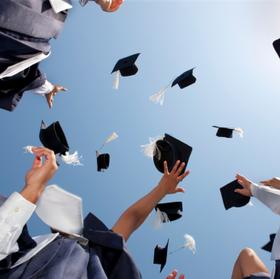- Barstow Community College is a two-year institution of higher education, committed to both student learning and success. The institution fosters an innovative learning environment that respects the diversity of individual backgrounds, abilities, cultures and interests. It prepares students for transfer to four-year colleges and universities. The College provides vocational education and training programs and courses that give students the knowledge, skills and certification necessary for entry through advanced level employment and career advancement.
School Highlights
Barstow Community College serves 4,614 students (30% of students are full-time).
The college's student:teacher ratio of 25:1 is lower than the state community college average of 32:1.
Minority enrollment is 76% of the student body (majority Hispanic), which is less than the state average of 77%.
Quick Stats (2025)
- Enrollment: 4,614 students
- In-state tuition: $1,104
- Out-state tuition: $5,400
- Student:teacher ratio: 25:1
- Minority enrollment: 76%
- Source: Integrated Postsecondary Education Data System (IPEDS)
Top Rankings
Barstow Community College ranks among the top 20% of public schools in California for:
Category
Attribute
Affordability
School Resources
School Overview
The teacher population of 186 teachers has stayed relatively flat over five years.
Barstow Community College
(CA) Community College Avg.
Carnegie Classification
Associate's Colleges: High Career & Technical-High Traditional
Baccalaureate/Associate's Colleges: Associate's Dominant
Institution Level
At least 2 but less than 4 years
At least 2 but less than 4 years
Institution Control
Public
Public
Total Faculty
186 staff
294 staff

School Calendar
Student Body
The student population of Barstow Community College has grown by 49% over five years.
The student:teacher ratio of 25:1 has increased from 13:1 over five years.
The Barstow Community College diversity score of 0.72 is more than the state average of 0.70. The school's diversity has stayed relatively flat over five years.
Total Enrollment
4,614 students
2,311 students

Student : Teacher Ratio
25:1
32:1

# Full-Time Students
1,397 students
1,232 students

# Part-Time Students
3,217 students
8,299 students



# Enrollment Undergraduate
461 students
240 students
# Full-Time Undergraduate Students
1,397 students
1,155 students

# Full-Time Graduate Students
n/a
63 students
# Part-Time Undergraduate Students
3,217 students
8,457 students
# Part-Time Graduate Students
n/a
10 students
Total Dormitory Capacity
n/a
140 students
% American Indian/Alaskan
1%
n/a

% Asian
6%
13%

% Hispanic
43%
47%

% Black
17%
7%

% White
24%
23%

% Hawaiian
1%
1%

% Two or more races
6%
5%

% Non Resident races
n/a
1%

% Unknown races
2%
3%


Diversity Score
0.72
0.70

College Completion Rate (Students who graduate in less than 4 years)
0.3074%
0.4221%

College Completion Rate (Students who graduate in 4 years or more than 4 years)
n/a
0.4304%
Average Graduate Earnings (10 Years)
$35,500
$34,700

Tuition and Acceptance Rate
The public in-state tuition of $1,104 is less than the state average of $1,236. The in-state tuition has stayed relatively flat over four years.
The public out-state tuition of $5,400 is less than the state average of $6,547. The out-state tuition has declined by 33% over four years.
In-State Tuition Fees
$1,104
$1,236

Out-State Tuition Fees
$5,400
$6,547

% Students Receiving Some Financial Aid
96%
85%

Median Debt for Graduates
n/a
$10,500
Median Debt for Dropouts
n/a
$6,239
Acceptance Rate
n/a
92%
Source: 2024 (or latest year available) Integrated Postsecondary Education Data System (IPEDS) , School Administrators
School Notes
- The College offers basic skill and enrichment programming for under-prepared and disadvantaged students as well as lifelong learning opportunities and continuing education courses for community members. It provides counseling and other support services to assist students in the identification of their goals and achievement of their personal, educational and employment potential. The College uses institutional research to advance its mission and its role in the community. The College works in partnership with military bases, local governments, agencies, businesses and schools to promote positive community development, economic growth, and change. Barstow College Learning Resource Center's mission is to serve the instructional and student support needs for the campus community through the following services: Library Tutoring Center Computer Commons Instructional Media Services. Barstow College offers Associate Degrees as well as Certificates. The intercollegiate athletic program at Barstow Community College consists of a combined 4 men's and women's varsity sport teams including baseball, men's and women's basketball, and women's softball. Barstow College's Counseling Department is staffed with professional counselors who offer individual counseling for students who want assistance in coping with the problems they face in everyday life. Issues relating to self-esteem, anxieties, relationships, and academic performance are common obstacles for college students.
Frequently Asked Questions
How much does Barstow Community College cost?
Barstow Community College's tuition is approximately $1,104 for In-State students and $5,400 for Out-State students.
What is Barstow Community College's ranking?
Barstow Community College ranks among the top 20% of community college in California for: Least expensive tuition and Percent of students receiving financial aid.
Recent Articles

Obtaining Your Bachelor's Degree at a Community College
Explore the evolving landscape of community colleges offering bachelor's degrees, addressing affordability, accessibility, and workforce needs.

A to Z of Community College Certificates and Courses
From business and healthcare to technology and skilled trades, the article showcases the breadth of options available to students seeking to enhance their knowledge, develop new skills, or pursue career advancement.

What is a Community College?
This comprehensive guide explains what a community college is, its history, and its role in higher education. It covers the types of programs offered, differences from four-year colleges, benefits of attending, and important considerations for prospective students, providing valuable insights for those exploring educational options.










